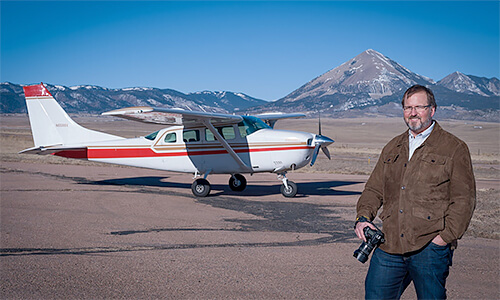Evan Anderman is a fine art photographer based in Denver who is best known for his aerial images of Colorado's Eastern Plains, and other less-traveled landscapes across the American West. His work is held in the Denver Art Museum collection and has been exhibited at institutions nationally and internationally, including the DongGang International Photo Festival/South Korea, Mt Rokko International Photo Festival/Japan, The Midwest Center for Photography, The Dairy Center for the Arts, The Arvada Center, American Mountaineering Center, Denver International Airport, Carmen Wiedenhoeft Gallery, The Colorado State Capitol, Robischon Gallery, Lamont Gallery, Buttonwood Art Space, and in his own gallery in Denver's Santa Fe Arts District. In November 2013, Anderman was honored for his unique environmental photography with the inaugural Photo District News (PDN) Duggal Image Maker Award. Prior to becoming a full-time photographer, Anderman spent decades working as a geologist, and holds a Master's and a PhD in Geological Engineering from the Colorado School of Mines and a BS in Geological Engineering from Princeton University.
Anderman's work aims to challenge our understanding of the relationship between human development and the natural world by documenting the way we use the land. "As a geologist, when I fly over the high plains of eastern Colorado, I look at the overlapping layers and how the land has been modified by a combination of processes, both natural and manmade," he writes on his website,
EvanAnderman.com. "The lowest layer, the land itself, has been created over literally millions of years and forms the foundation. Draped on top of that is what mankind has imposed in various ways; activities and structure that are collectively called 'progress.' While my main interest is the subtle beauty of the landscape itself, I also like to tease out what man has done with that land, and make the viewer wonder what is going on and why. The images are fundamentally aesthetic, but leave you questioning the subject matter."
